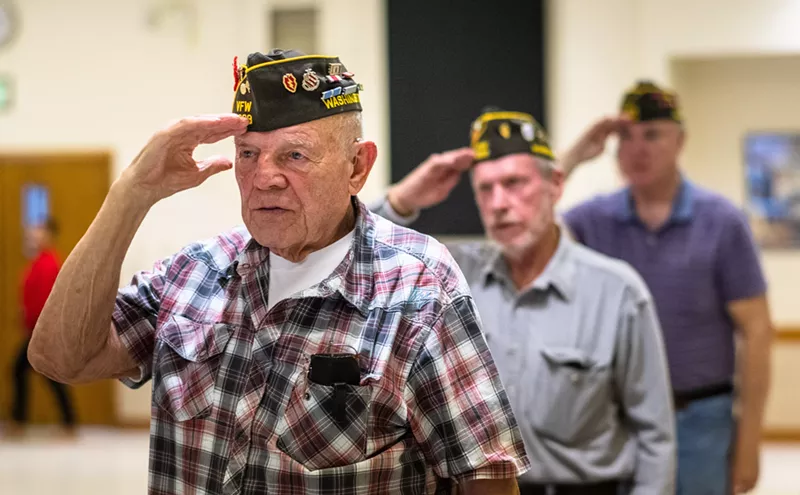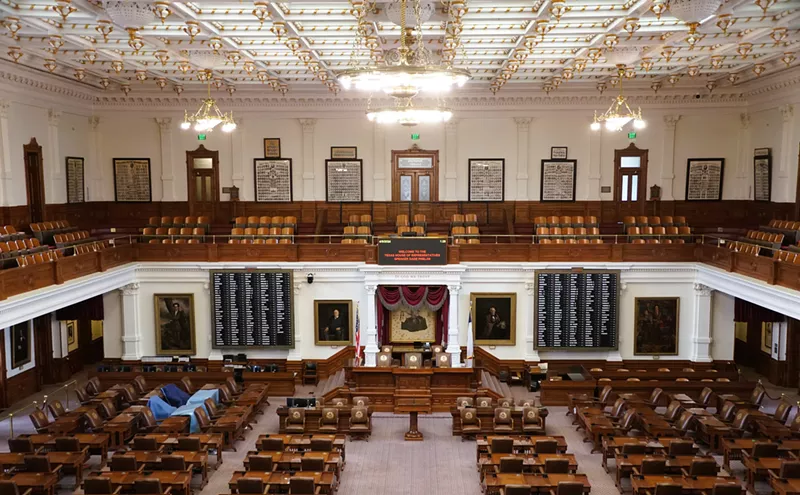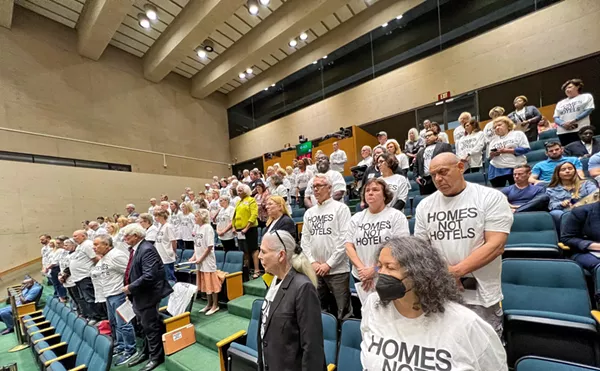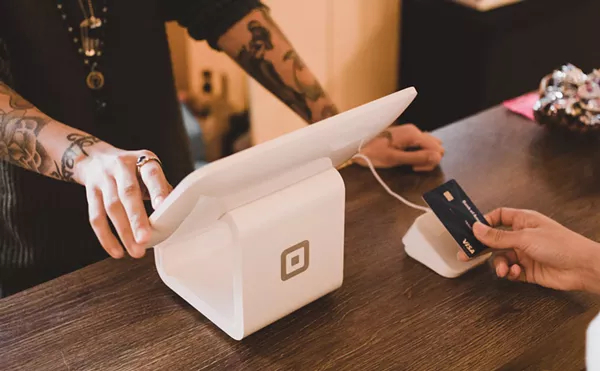Last season may have been Parcells' hardest. For the first time in his professional life, he did not make a team better. His coaching made a team worse. So he turned inward this off-season--and looked back. Back to the New York Giants team of 20-plus years ago, the one that went 3-12-1 in 1983, and then, in 1986, stood alone as Super Bowl Champions. Then stood alone once more in 1990. Back to the New England Patriots of the mid '90s, an awful squad with a 2-14 record that Parcells took to the Super Bowl four years later. Back to the New York Jets of the late '90s, a team that went from winning one game in 1996 to playing, under Parcells, in the AFC Championship two years later. Only the great Lombardi had turned such a loser into such a winner in the same period of time.
And then to Dallas in 2003, because retirement bored him and the Cowboys had averaged five wins in the past three seasons. That first team under Parcells surprised even him: a 10-6 finish and a playoff berth. But it was last year's squad, with its 6-10 record, that had Parcells vowing change.
He got it. He got it the only way he knew how--by looking back. Because change for Parcells does not really mean "change." It means returning to what once worked and may again. This will be the question of the Cowboys' 2005 season: Can a team using the schemes and players from Parcells' former squads bring success to this one?
Parcells thinks so. "We've got to do something here," he says, two days before his first preseason game, a game he'll lose 13-11 to the Arizona Cardinals, a team that's had one winning season in its last 20. The loss, however, doesn't concern him. He's more worried this training camp with evaluating players than beating the Cardinals. He has a lot to evaluate. "Since [last] season was over," Parcells says, "I've made every effort I can to improve this team."
The change--or improvement, however you want to read it--starts with the defense. For the first time in their 46-year history, the Cowboys will use a 3-4 front (three defensive linemen, four linebackers) in addition to the customary 4-3. The 3-4 is the defense Parcells used with the Giants, the Patriots and the Jets. He believes it best attacks the quarterback, which didn't happen last year in Dallas. The 3-4 relies on speed from the linebackers--speed to get beyond pass-blocking offensive linemen, speed to swarm to the ball. No NFC team used it last year, but six AFC teams did, including Baltimore and Pittsburgh--defensive stalwarts--and New England, the Super Bowl champions. It's the defense Parcells loves.
It's also the defense that forces very good players--among them, defensive end Greg Ellis, the Cowboys' sack leader the last four seasons, and La'Roi Glover, a five-time Pro Bowler at defensive tackle--to learn new positions. It also places untested players in starring roles. The 'Boys' draft picks, linebackers DeMarcus Ware, Marcus Spears, Kevin Burnett and defensive end Chris Canty, should all see significant minutes. In fact, Ware should start; Burnett might, too. And who knows what will happen once Spears returns next month from ankle and groin injuries. "From my perspective," says Cowboys owner Jerry Jones, "I want to see the young players play. But I also want to have success immediately."
Parcells knows this. So he didn't leave just anyone to teach his beloved 3-4. No, he reached into yesteryear. Just now walking past in cleats and a XXL Cowboys T-shirt is Jim Burt, a defensive tackle from the Giants' glory years, here for a week in training camp to teach Dallas' defensive line the nuances of its new set. And over there, shoving around the linebackers, is Carl Banks, another former Giant and the man who lined up opposite Lawrence Taylor at outside linebacker; Banks is also here to teach. And, oh yeah, about L.T.: "I got a message to him," Parcells says. "He's coming." Taylor will instruct the linebackers once more on the 3-4 some time before camp is over.
But won't all these former players, the ones, ahem, who aren't coaches, cause jealousy--or at least confusion--among the people who are? "I had a long talk with Kacy [Rodgers, the Cowboys defensive line coach] and Mike [Zimmer, the defensive coordinator] before I did this," Parcells says. "I said, 'Look. These guys know how to play these positions...They just may, by osmosis, bring you something, a feel, something that I've failed to get across to you.' You just can't cover every little nuance of every little thing. It's difficult for me to do that...I told the players, I said, 'Filter out what [Burt and Banks] give you. Filter it out. Take what you think can be beneficial and use it.' And that's just what you're hoping for--a fragment here or there that makes a difference."
Office politics be damned then. Parcells wants to win. He is, if nothing else, more determined than ever. He's barking at players: "Tony!"--Romo, one of the back-ups at quarterback--"You screwed up everything! You screwed up everything!" He's scrimmaging more than he ever has: "We've had 164 scrimmage plays," he says the day before the Arizona game. "We've had a lot more contact [than last year]." He's calling the offensive plays and might even call them on defense: "I'm watching the game, too, you know." He is, in short, in control, as thoroughly as he's ever been. He's orchestrated the last three drafts. And his roster is filled with his players--72 of the 84 guys at camp opening day were acquired during the Bill Parcells reign. More important, a lot of these players are Parcells Guys.
He has always had Parcells Guys: gritty, strong, physical athletes that handle the furor that is Bill Parcells during the week and execute his game plan perfectly each Sunday. If they perform for him, Parcells is loyal--maybe to a fault. The roster is littered with 30-something Parcells Guys, guys other teams have cast aside. Aaron Glenn, a cornerback in his 12th year and an off-season free-agent pick-up, played under Parcells when both were New York Jets. Jason Ferguson, the nose tackle who will anchor the 3-4, is an eight-year veteran acquired from the Jets. Drew Bledsoe, the Cowboys quarterback, another free agent and, at 33, an aging one, played under Parcells 13 years ago in New England. (Bledsoe, of course, replaces another Parcells Guy, last year's 41-year-old starting quarterback, Vinny Testaverde, who worked under Parcells with the Jets.) Terry Glenn, expected to be Bledsoe's favorite receiver this year, first caught passes from him 10 years ago in New England under Parcells' watch. Keyshawn Johnson, the No. 2 receiver, is another Parcells Guy from his time with the Jets.
"If a guy can play that's been removed from Parcells for a couple of years," Johnson says, "then I don't see why you wouldn't go get something you're familiar with."
But that's just it. As Parcells says, "Your habits become you." So what if what you're familiar with is no longer what's successful in the NFL? What then?
Oxnard, California is a suburb in an endless line of them moving north out of Los Angeles. If it has a distinguishing mark, it is the strip mall. Its streets are for driving, never walking or biking. But the weather here is cool--20 degrees cooler than what's found in Dallas in August--and the hotels are cheap.
One of them is a Courtyard by Marriott a mile east of training camp. On a recent Sunday, I stood in its elevator with a man in his late 50s. He looked like a cowboy. Tall and lean, he wore Wranglers and boots and a mustache that drooped to his chin.
"Are you from Texas?" I asked.
"Nope. Montana."
I excused myself. Said with the way he dressed, I thought maybe he'd be in California to see the Cowboys.
He said he was. "My boy plays for them."
"Oh really. Who's that?"
"Drew Bledsoe."
Mac Bledsoe got off on the third floor. "See you at practice," he said.
Drew Bledsoe was the Cowboys' big off-season grab. Dallas gave him a three-year $14 million deal in February--almost half of what Jerry Jones spent on players in the off-season. The question is why.
Simple. Bledsoe went to a Super Bowl with Parcells. Therefore, Bledsoe is among the best of the Parcells Guys. No matter that the game was nine years ago, "I had a background with him," Parcells says of his quarterback. "And I like the player." Fine, but by many standards--including Buffalo's, who released Bledsoe after last season for some dude named J.P. Losman--Bledsoe's done, his best days now the property of NFL Films.
The evidence of his demise is everywhere. Bledsoe went 23-25 in three years as a starter in Buffalo. His completion rate dropped each year. Last year, he had the fifth-lowest quarterback rating in the league, one spot ahead of Dallas' Vinny Testaverde. He's as slow as Testaverde, too. Bledsoe was sacked 140 times in Buffalo. That's almost three a game.
"There's a little more skepticism about the whole situation," Bledsoe said one recent morning. "To me, it's just a matter of coming out and proving that I can still get the job done. And I think I'll be able to do that very effectively."
To be fair, in practice this year he looks...well, quick isn't the word, but maybe mobile is--rolling right, grunting as he goes, throwing a sideline out for a first down. The guy could evade some pressure if he had to; and he can throw from one hash mark to the other sideline and 20 yards downfield as hard as anyone. He does it all the time in practice, at least.
"I think his arm is still good," Parcells says. "He's been a durable player. He still was reasonably competitive last year...I think he can be a good solid quarterback if I get the right things around him and put the cast to it that he needs to function."
That cast begins with Terry Glenn. The wide receiver looks phenomenal this camp--pure speed after he catches the ball and the Cowboys' best deep threat. But more than that, there's his history with Bledsoe.
In 1996, Glenn caught 90 passes for New England, a rookie record, with Bledsoe at the helm. Of Glenn's 31 all-time touchdown receptions, 21 have come from Bledsoe. Mac Bledsoe says, "I just know that [Drew's] plum excited to be working with Terry again."
But for how long? Glenn's stayed healthy about as long as Scott Weiland's stayed sober. He's missed at least one game in eight of his 10 seasons. Last year, he missed 10 games with torn ligaments in his right foot. Thirty-one now, his age becomes a factor.
"I think Terry's done everything he can possibly do to be ready to play this year," Parcells says. "He's been working out--he worked out like a fanatic...I got a greater sense of determination [from him] this off-season."
If Glenn stays healthy and Bledsoe grunts his way to glory--or at least a first down--the Cowboys offense could be all right. A defender smothering Keyshawn Johnson doesn't mean he isn't open. Jason Witten is an All-Pro tight end. And Julius Jones could lead the league in rushing. But Jones, Bledsoe, all of them, will depend on the offensive line. And it's looked like crap.
In Seattle Monday, there was slightly less with which to be concerned. But that's because the line looked godawful against Arizona two weeks ago. The Cardinals sacked the Cowboys four times. This follows a 2004 campaign that ended with Testaverde and back-up Drew Henson sacked at least three times in the last five games--and five times against Washington the day after Christmas. Tackle Flozell Adams led the team with 12 penalties last year. Against Arizona this preseason, a promising move down the field in the third quarter ended with a third and 50--the offensive line had four penalties on the drive. The unit finished the game with seven.
"That hadn't been happening in practice," Jerry Jones says. "That was disappointing."
Yes it was. And it'll get more disappointing if the Cowboys can't find a right tackle worth a damn. Worse still if Bledsoe can't handle a mauling similar to what Testaverde took at the end of last season. That's when the Cowboys could really be screwed.
The back-up quarterbacks--eh, not so great. Tony Romo ran with the second team most of training camp. But that's only because Drew Henson is his competition. Henson looked terrible. He threw at the feet of running backs waiting for screen passes. Overthrew wide receivers in the red zone by 10 yards. Parcells one Wednesday morning hollered at Henson for throwing an interception even before Lance Frazier, the cornerback, had intercepted the ball.
Tony Romo's not without his faults, either. "Tony had two turnovers in nine plays this morning," Parcells said that same Wednesday morning. "If we had 63 plays in the game and he had two [turnovers] every nine, that would be 14 by himself. I'm not trying to be a wise guy; I'm just saying he's gotta be careful."
He has been. He outplayed Henson in Phoenix and Seattle by basically not turning the ball over and looking competent under center. But if Parcells wants to, he could still sign a veteran for the back-up job. One veteran the media at Oxnard heard as an option was--you ready for this?--Vinny Testaverde.
"I'd like to leave that one alone for a while," Parcells says of the back-up situation. "Much to your consternation."
Let's keep walking, he says. He'll talk about the off-season if we keep walking. So we do. We walk first past the other lingering members of the media, then past the autograph seekers behind the gate shouting "Greg! Greg!"
Greg Ellis stops a few yards shy of the Cowboys' locker room, where it's quieter, where other media and fans can't bother him. He's a large man, 6-foot-6 and 280 pounds, a basketball player gone bigger, and for the past four seasons the defensive end has led the Cowboys in sacks. But he worried this off-season whether he'd be able to do it again.
In the new 3-4 defense, Ellis moves over one spot. He used to line up opposite the offensive tackle's outside shoulder, using speed to get past the tackle and pressure the quarterback. Now, he's directly across the line of scrimmage from the offensive tackles, all of whom outweigh him by at least 40 pounds. Now, having to face them straight up, he fears the tackles' size and power will compromise his speed. He fears he might fall out of favor with Jerry Jones. He fears he won't get the $500,000 bonus due him at the end of the year.
At least, that's what he told The Dallas Morning News a month ago. Tonight, downplaying his past statements, he says his fears were overblown and his talent underestimated. "The coaches tell me I'm getting better at it, so I think I am," Ellis says.
The concerns, however legitimate, are a microcosm of this Cowboys defense. The switch to the 3-4 may be good for the team, but it may also minimize certain players' best assets--so Parcells wants it both ways. He said last Monday he'll also use the 4-3 this year (four defensive linemen, three linebackers). It's the defensive package with which most of his players are familiar. It will also put onto the field the quality players alienated by the 3-4.
So why use the 3-4 at all? Well, aside from it being Parcells' baby, it's an aggressive defense, and it pressures the quarterback. Plus, the Cowboys sorta drafted their picks this off-season with the 3-4 in mind. And they spent money on free agents that would best serve the 3-4. And they harped on it throughout mini-camps and the first two weeks of training camp to the exclusion of other defenses--because it's not like the 3-4's easy to learn. Just ask DeMarcus Ware.
Ware says he feels "confused." He's the Cowboys' No. 1 draft pick, a defensive end out of Troy State with a smile as expansive--and maybe one day as profitable--as anyone's in Hollywood. Parcells put Ware at outside linebacker hoping he'd play the position the way ex-Giant Lawrence Taylor did. Fast and hard. He did that against Seattle. He forced two fumbles, recovered one of them, sacked Seahawk quarterback Matt Hasselbeck and intercepted one of his passes. All in the first half.
"He's L.T. reincarnated," says Jim Burt, who played beside Taylor in New York and accepted Parcells' offer this month to help the Cowboys linemen learn the 3-4. "He might be even a little bit faster." Still, his play so far is inconsistent. At times, Ware looks "lost," Parcells says. But that's because he's learning a new position (linebacker) in a new league (the NFL) in a different set (the 3-4). Plus, Parcells says the outside linebacker position in the 3-4 is the "most mentally taxing" of any on the field. Ware's adapting, though. He says he understands "90 percent" of the new defense. Of course, he said that before Parcells announced he'd also use the 4-3 this year. Who knows how confused the kid is now.
Blame La'Roi Glover and Jason Ferguson for that. No, better yet, blame Parcells. Glover is a defensive tackle and a five-time Pro Bowler. Ferguson is a former Jet and a Parcells Guy acquired in the off-season to fill the nose tackle void in the 3-4 defense--the same position Glover was to learn. This left Glover without a job coming into camp. The argument could be made that Parcells was hasty in signing Ferguson, never letting Glover prove his worth at nose tackle. This is no knock on Ferguson; the man, after all, had 75 tackles and 4.5 sacks in 2003, but by signing him, Parcells has created an oh-shit phenomenon on the defensive line. Glover's played his way back into a starring role, so how do you use two guys for one spot? If a game's on the line, which guy do you turn to? And if you switch to the 4-3 to utilize both their skills, do you use that defense if the same game's on the line? And if you do that, will some of your best pass rushers watch from the sidelines? And just how confused will all these guys be anyway switching from 3-4 to 4-3?
How much Glover plays and how much Ferguson plays will be determined by how well the outside linebackers play. In particular, how well they rush the quarterback. Right now, excluding Ware's performance against the Seahawks, nobody's getting it done. Seattle's Hasselbeck completed 12 of 15 passes for 135 yards and a touchdown in a quarter and a half of play. Against Arizona, a decrepit-looking Kurt Warner could have sung the score to the H.M.S. Pinafore dropping back to pass. He torched the Cowboys for 151 yards and a touchdown on 14-of-19 passing. If the Cowboys outside linebackers, the integral rushers in the 3-4, fail to reach quarterbacks as often as they did Warner and Hasselbeck, Parcells may not rely on the defense that much.
The problem with the outside linebackers is their youth. "We're just not very experienced there," Parcells says. Aside from DeMarcus Ware, two other rookies have practiced at outside linebacker: second-round draft pick Kevin Burnett and Reggie Love, who played basketball at Duke. A third rookie, Marcus Spears, is expected to play once he recovers from injuries. Burnett should see a lot of field time this year and so should another rookie, Chris Canty, a 6-7 defensive end who'll probably back up Greg Ellis.
So the Cowboys could have four, maybe even five rookies on the field at the same time. Has Parcells ever had that many? "Yeah," he says.
How scary was it? "It's scary," he says, pausing for a moment, and it's in that moment that he casts his mind back, back to the glory years. If the Cowboys will only play as those teams did, everyone will see Parcells was right all along. "In one particular case," he says, "it was scary for the other team.
"Because 56 [Lawrence Taylor] was one of those rookies."












